"Night Reaper": a daring Czech pilot as a nighthawk
What must it have sounded like when Kuttelwascher's British superiors first tried to pronounce his name? Unfamiliar even to German ears, Karel's family name must have been a hard nut to crack for English-speaking tongues. Pragmatically, it quickly became the abbreviated form "Kut" whenever Flight Lieutenant Karel Kuttelwascher was mentioned - and there was to be plenty of reason to do so, for Kuttelwascher was one of the RAF's most successful fighter pilots and by far the most successful night fighter on the entire Allied side.
On Karel Kuttelwascher and the "night intruder" missions
One can already guess that the life of the aviator born in 1916 in Havlíčkův Brod, Bohemia, did not follow a straight line. In 1934, he joined the Czech Air Force, where he was trained as a fighter pilot. As a member of this air force, he experienced the annexation of his homeland by Nazi Germany in April 1939. He managed to escape by adventurous means via Poland to France, where he was accepted into the Foreign Legion immediately before the outbreak of war. In accordance with the circumstances of the time, Kuttelwascher's life remained adventurous: in the three weeks or so from the start of the German "Western campaign" until the defeat of France, he flew numerous missions as a fighter pilot in the ranks of the French air force and recorded several - though unverified - kills. After the surprisingly quick defeat of France, he once again managed to escape from a country overrun by the Germans to a supposedly safe haven: via Algeria and Morocco, he reached Great Britain.
There, in the dramatic days of the beginning "Battle of Britain", special units were set up for the Polish and Czechoslovak pilots who had escaped from the continent. Strangely, however, Kuttelwascher did not end up with one of the four new Czechoslovakian RAF squadrons, but was assigned to one of the most traditional units of the Royal Air Force: on 3 October 1940 he began his service with No. 1 Squadron.
Karel Kuttelwascher would remain with this unit for two full years, during which missions he managed to shoot down three Bf 109s by June 1941. From their base at Tangmere, No. 1 Squadron took part in the fighting around the attempted channel breach of the two battlecruisers Scharnhorst and Gneisenau on 12 February. Two Hurricanes were lost in the attacks on the German capital force that day, and Kuttelwascher herself succeeded in boarding gun attacks on an escorting destroyer which caused considerable damage.
A few weeks after this famous "channel dash", No. 1 Squadron began to retrain for a new role that obviously suited Kuttelwascher's flying and fighting skills. In order to combat incoming German bombers more effectively at night, a new offensive strategy had been adopted in early 1942. In missions called "night intruder", the British night fighters lurked above the German bomber sites, either to intercept the heavily loaded bombers taking off or to shoot down returning aircraft on landing. In both phases of flight, the bombers, often closely packed and flying slow and at low altitudes, proved particularly vulnerable. Shooting down the enemy on take-off had the advantage that they would not be able to drop their deadly cargo over British targets, while landing aircraft could be expected to have overtired enemy crews and run out of fuel. No. 1 Squadron was heavily involved in these risky night fighter operations from 1 April to 2 July 1942, after which it was replaced in this role by No. 43 Squadron.
Kuttelwascher's unit was equipped with Hawker Hurricane IIc at this time. The four 20mm Hispano-Suiza guns of this version predestined it as a low-altitude attack aircraft and, as was to be confirmed in the long-range night fighter missions, to combat heavy bombers. To achieve the range required for these missions, the aircraft was equipped with two long-range tanks, each holding 45 gallons, which gave it the necessary operational time of over three hours. The night missions were also reflected in a new coat of matt black paint, initially applied to the undersides of the Hurricanes, but soon on all surfaces.
On the night of the full moon from 1 to 2 April, a Ju 88 taking off south of Paris fell victim to his on-board weapons, and shortly afterwards he severely damaged a similar aircraft that was still rolling on the ground. This prelude already points to a pattern that was to solidify over the next three months: Kuttelwascher often found his opponents within a very short time - and he usually returned with more than one kill. This came to a climax on the night of 4 to 5 May. Within only four minutes Kuttelwascher shot down three He-111s. No other night fighter after him was to succeed in this. During the last long-distance night fighter mission of No. 1 Squadron on the night of 2 July, Karel Kuttelwascher destroyed two Do 217s and damaged another. With these, 15 enemy bombers had fallen victim to the guns of his "Night Reaper" Hurricane during the intense weeks of night intruder missions - and Kuttelwascher's difficult name was on everyone's lips for a short time. To put his performance in perspective, it is interesting to know that the entire No. 1 Squadron recorded the shooting down of 22 enemy aircraft and the damage of 13 others for these three months.
After 2 July, No 43 Squadron took over the night intruder operations, while No 1 moved to Acklington to upgrade to the Hawker Typhoon. Karel Kuttelwascher himself, on the other hand, found himself briefly with 23 Squadron at Ford, where he resumed intruder missions with the DeHavilland Mosquito - but without seeing a single enemy aircraft. Until the end of the war, he served on the staffs of the Czechoslovakian Air Force in exile and, after a six-month stay in the USA, with the No. 32 Maintenance Unit. Here he flew as a test pilot and was involved in the development of new bombers. After the war, the highly decorated Kuttelwascher returned to Czechoslovakia for a short time, but when the Communists took over, he again left his old home for Great Britain. In the short time he was still granted, he remained loyal to flying and worked as a pilot for BEA, the "British European Airways". On 17 August 1959, at the age of less than 43, he died unexpectedly and prematurely as a result of a heart attack.
About the kit from Arma Hobbies
What Arma Hobbies puts in the box here is unlike any of the Hurricane kits I have held in my hands so far. On the one hand this means the quality of the injection moulded parts: I have seldom seen such precise and fine detail moulding as that of the cockpit equipment or the interior of the wide landing gear bay, I also find the way the rows of rivets or the structure of covered surfaces are depicted very convincing.
The division of the individual assemblies is also well thought out; here one thing logically follows the other. This, together with a fitting accuracy that is simply fantastic, ensures that building starts as a pleasure -and ends as such after a relatively short time. Quality in the decisive points can also be attested to the decals; the enclosed precisely fitting masking foils also do their bit to convince of the high quality of the new kit.
So far, the new kit has impressed me and the associated building process has pleased me.
However, I would like to make one final point of criticism: to my surprise, the canopy handles are missing, both those on the inside and on the outside are not mentioned in the instructions, nor can they be found as components. So I was able to solve this issue very quickly by reaching into my spare parts box.
Arma Hobbies has indeed put a brilliant start to their quarter scale Hurricane series on the workbenches here; I will probably also be happy to participate with the subsequent versions!
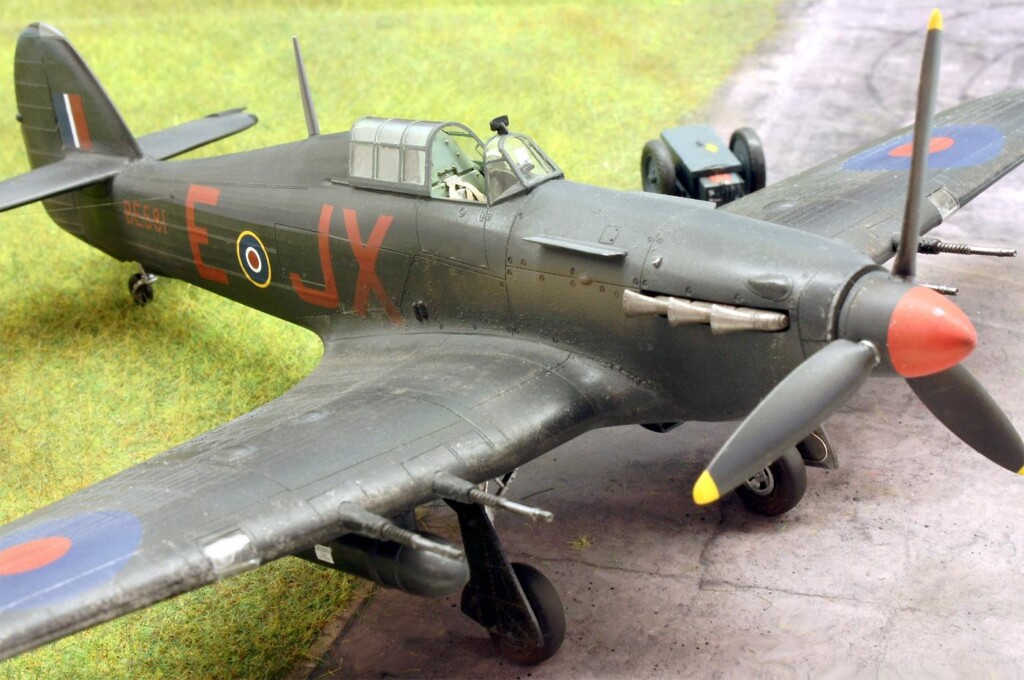
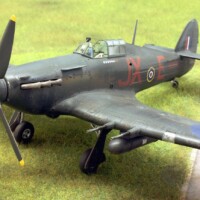
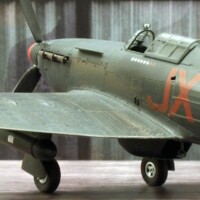
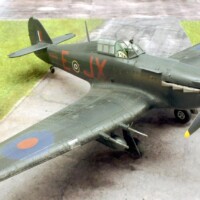
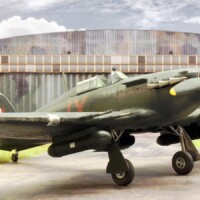
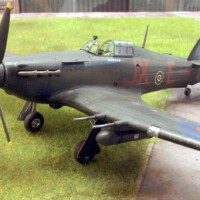
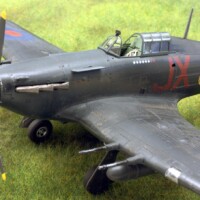
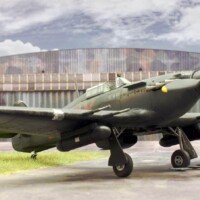
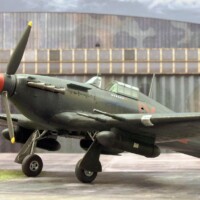

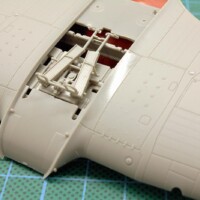

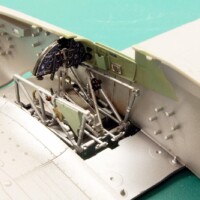
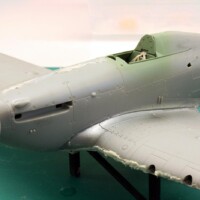
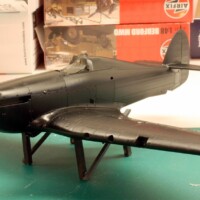
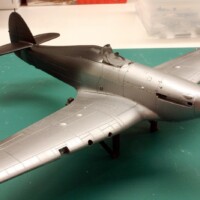
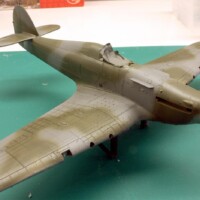
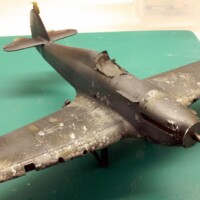
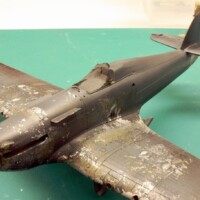
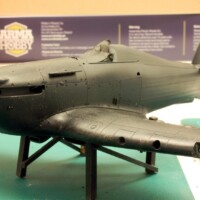
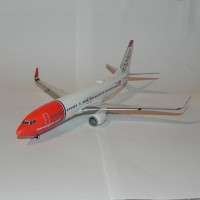
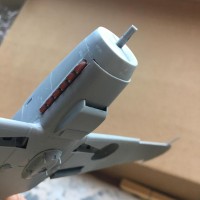
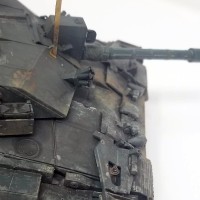
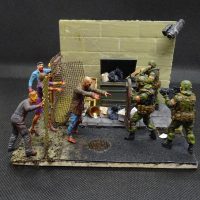
Wow, what a beautiful rendition of a war torn Hurricane. Love to see how you’ve build up the weathering by the different stages of painting as shown in pics 15 thru 20. What technique did you use to create the chipping effect, was it the “salt method”?
Thank you very much for your words and your interest: I applied "Maskol", i.e. masking liquid, to the primer with a sponge, continued to work on it in colour and then rubbed it off at the end.
I prefer this to the salt method, as it allows me to work in a targeted way and also to make corrections.
Thanks for your answer. Haven’t thought of using masking fluid in that way, definitely going to try it in a future build. @rosachsenhofer
Looks very good. This article makes me want to get my hands on an 1/48 Arma Hurricane.
Movie recommendation is 2001's Dark Blue World for a fictionalized account of Czech fighter pilots flying for the RAF in WW2.
A very welcome comment, thank you! The film tip is great!
Great build and story. Your paint finish is very realistic.
Thank you very much!
The final result is very convincing. That's one of the best "night finishes" I've seen, and you solve the problem of "boring" being used to describe an all-black scheme. Excellent work all around (as usual).
A feedback that makes me happy - thanks Tom!
Fascinating story and spectacular build. The finish is impressive!
Chas, I say thank you!
An amazing night fighter, Roland @rosachsenhofer
The worn effect on this Hurricane looks very realistic.
Two thumbs up.
As always, your words please me, thank you!
Excellent result and great writeup, Roland!
Thank you, very appreciated, my friend!
Outstanding finish on this build.
Thank you indeed!
Fantastic finish, Roland
Thank you!
A great build of what is fast becoming a classic kit, and a fascinating story of the pilot, sorry, but I couldn’t spell his name let alone try to pronounce it.
George, you are certainly in good company Thanks for your comment!
Thanks for your comment!
Roland, this Arma Hurricane is the "Fan Boy's" Hurricane. For those schooled in the fine details of the type and are into the history of the Hurri and its pilots this is the " It kit" or the "Go to " kit. They've included everything but the kitchen sink or the hand holds for the canopy and the cockpit. On the other hand they've included the stirrup for entering the aircraft and have modeled the hand plate open for the pilot to enter the A/C. All minor details that a true fan would know about.
Love, the article. You've educated the community on a little know pilot and war hero and have brought out the best in this kit. While showing a monotone paint job basically recreating the painting process or history of the aircraft being modeled. A article worthy of Hard copy with some sharp crisp photos too. Looking forward to your next adventure in modeling another Arma Hurricane.
Thank you for the welcome comments on Hurricane and the article, Stephen!
Roland - That's the best looking Hurricane night finish I've seen yet. Very realistic. Bravo! Your article about Kuttelwascher is also right up there.
Thank you a lot, makes me quite happy!
I agree with Tom C - one of the best night/black finishes I've seen! A beautiful build.
Thank you indeed, Greg!